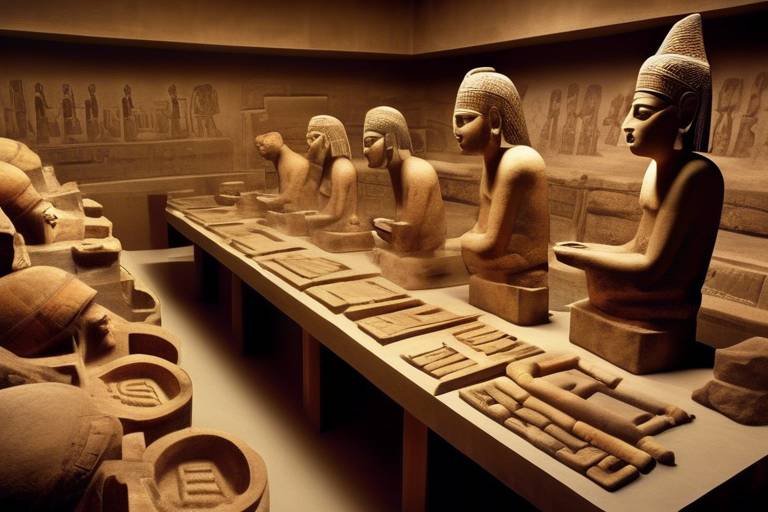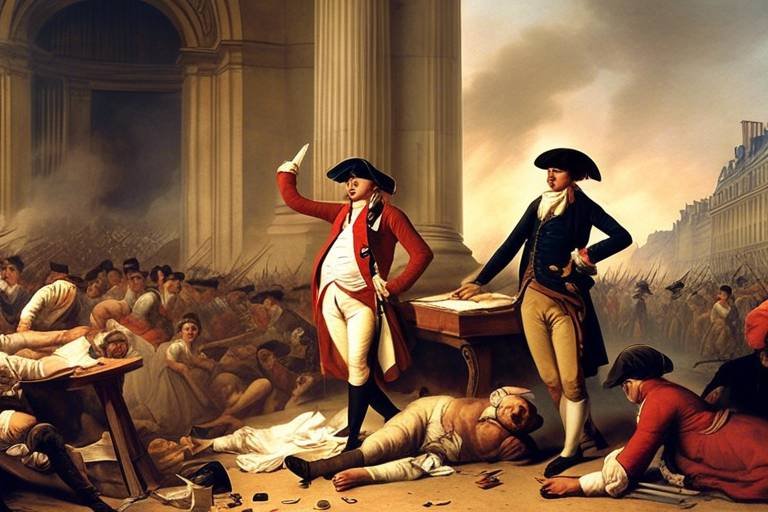How Ancient Civilizations Influenced Trade Practices
Throughout history, ancient civilizations have played a pivotal role in shaping trade practices that continue to influence modern commerce. These historical societies laid the foundation for the exchange of goods and services, establishing trade routes and economic systems that paved the way for global trade as we know it today.
Ancient Mesopotamia, known for its advanced civilization, contributed significantly to the development of trade practices through its barter economy. The exchange of goods and services in Mesopotamia formed the basis of early trade systems, highlighting the importance of mutual benefit and resource exchange in ancient societies.
The Phoenicians, renowned for their maritime expertise, established trade routes across the Mediterranean Sea, influencing global commerce through their seafaring ventures. Their navigation skills and trading networks played a crucial role in connecting distant lands and fostering international trade relations.
The Silk Road, a historic trade route linking the East and West, facilitated the exchange of goods, ideas, and culture between diverse civilizations. This ancient pathway not only shaped trade practices but also promoted cultural exchange and mutual understanding among societies along its vast stretch.
The Aztec civilization in Mesoamerica had vibrant marketplaces and a tribute system that governed economic activities within the region. These structures influenced trade practices by regulating commerce and showcasing the significance of economic exchange in sustaining societal functions.
The Roman Empire, known for its vast trade networks and standardized currency, played a key role in shaping trade development in the ancient world. Roman economic practices and commercial activities influenced trade routes, market dynamics, and monetary systems across regions under Roman control.
The Indian Ocean trade routes served as vital channels for cultural exchange and economic interactions between diverse civilizations bordering the Indian Ocean. Maritime commerce along these routes facilitated the exchange of goods, technologies, and ideas, fostering interconnectedness and trade partnerships among ancient societies.
The Chinese silk trade not only symbolized luxury and wealth but also served as a diplomatic tool for fostering international relations. The exchange of silk and other commodities played a significant role in shaping trade practices and diplomatic negotiations between China and its trading partners.
Viking trade routes and exploration activities in medieval Europe showcased the seafaring prowess of the Norse civilization. The Vikings' extensive trade networks and exploration ventures influenced trade practices, cultural exchanges, and economic developments in regions they navigated.

Barter Systems in Mesopotamia
Barter systems in Mesopotamia played a crucial role in shaping early trade practices in ancient civilizations. Mesopotamia, known as the cradle of civilization, relied heavily on the exchange of goods and services to meet the needs of its people. In this barter economy, items such as grains, livestock, textiles, and tools were traded without the use of money, establishing the foundation for trade interactions.
The barter system in Mesopotamia was characterized by a system of equivalency, where goods were exchanged based on their perceived value. This system required a mutual agreement between trading parties on the value of the items being exchanged, leading to a complex network of trade relationships within the region.
Merchants and traders in Mesopotamia played a vital role in facilitating trade exchanges by acting as intermediaries between different communities. These individuals not only helped in the exchange of goods but also fostered cultural exchange and communication among diverse groups, contributing to the growth of trade networks.
Additionally, the development of trade routes and marketplaces in Mesopotamia further enhanced the efficiency of trade practices in the region. These centralized hubs allowed for the exchange of a wide variety of goods, promoting economic development and specialization among different communities.
Overall, the barter systems in Mesopotamia laid the groundwork for future trade practices by emphasizing the importance of mutual exchange and cooperation in economic transactions. The legacy of these early trade systems can still be seen in modern commerce, showcasing the enduring influence of ancient civilizations on global trade dynamics.

Maritime Trade Routes of the Phoenicians
The Phoenicians were renowned for their mastery of maritime trade routes, which played a pivotal role in shaping ancient commerce. These seafaring people established a vast network of trade routes across the Mediterranean Sea, connecting various regions and facilitating the exchange of goods and ideas. The Phoenician sailors were pioneers in navigating the open seas, using their advanced shipbuilding techniques to traverse long distances and reach distant lands.
One of the most famous trade routes associated with the Phoenicians was the route from the eastern Mediterranean to the western Mediterranean, linking major trading hubs such as Tyre, Sidon, Carthage, and Gades. This maritime network allowed for the transportation of valuable commodities such as textiles, metals, spices, and precious stones, contributing to the prosperity of Phoenician city-states and fostering economic growth.
The Phoenicians' expertise in maritime trade also enabled them to establish colonies and trading posts along their routes, creating strategic outposts for conducting business and facilitating cultural exchange. These settlements served as hubs for commerce, where merchants from different regions converged to barter goods and establish commercial relationships.
Furthermore, the Phoenicians' maritime trade routes had a significant impact on the development of international trade, influencing the trade practices of neighboring civilizations and contributing to the diffusion of goods and technologies across the ancient world. The exchange of goods along these routes not only stimulated economic activity but also fostered cultural interactions and diplomatic ties between diverse societies.
In conclusion, the maritime trade routes of the Phoenicians were instrumental in shaping the commercial landscape of the ancient world, laying the foundation for future trade networks and establishing a legacy of seafaring expertise that continues to inspire exploration and trade to this day.
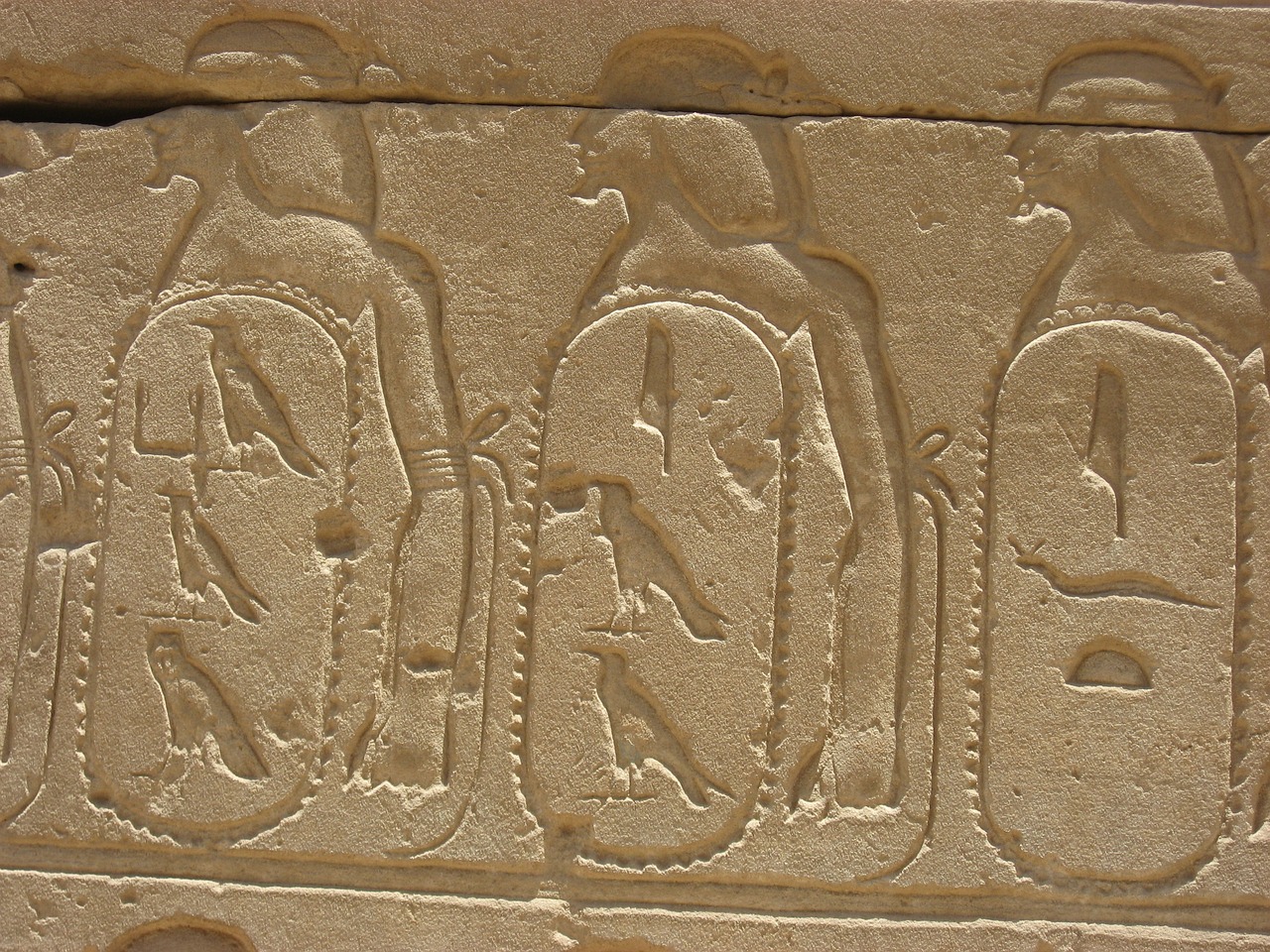
Silk Road and the Spread of Goods
The Silk Road was a network of ancient trade routes that connected the East and West, facilitating the exchange of goods, ideas, and culture between different civilizations. This historic pathway played a crucial role in shaping trade practices by enabling the spread of goods across vast distances. Merchants traveling along the Silk Road carried a variety of commodities, including silk, spices, precious metals, and textiles, contributing to the flourishing trade between regions.
One of the key aspects of the Silk Road was its role in promoting cultural exchange among diverse societies. As goods traveled along the trade routes, they not only brought economic prosperity but also facilitated the exchange of knowledge, technology, and artistic influences. This cultural interchange enriched the societies along the Silk Road, fostering a climate of innovation and collaboration that transcended geographical boundaries.
The Silk Road was not just a physical pathway for trade but also a bridge for diplomatic relations between civilizations. The interactions that took place along the route led to the establishment of diplomatic ties and alliances, shaping international relations in the ancient world. The exchange of goods through the Silk Road played a significant role in fostering diplomatic connections and promoting peace among nations.
Furthermore, the Silk Road was instrumental in the dissemination of religions such as Buddhism, Islam, and Christianity, as well as philosophical ideas and scientific knowledge. The exchange of goods along the route facilitated the spread of cultural practices and belief systems, contributing to the diversity and interconnectedness of ancient societies. This cultural diffusion had a lasting impact on the development of trade practices and the formation of global networks.
In essence, the Silk Road served as a conduit for the spread of goods, culture, and diplomacy, connecting civilizations across continents and shaping the foundations of modern trade practices. The legacy of the Silk Road continues to influence global commerce and exchange, highlighting the enduring impact of ancient trade routes on the interconnected world we live in today.
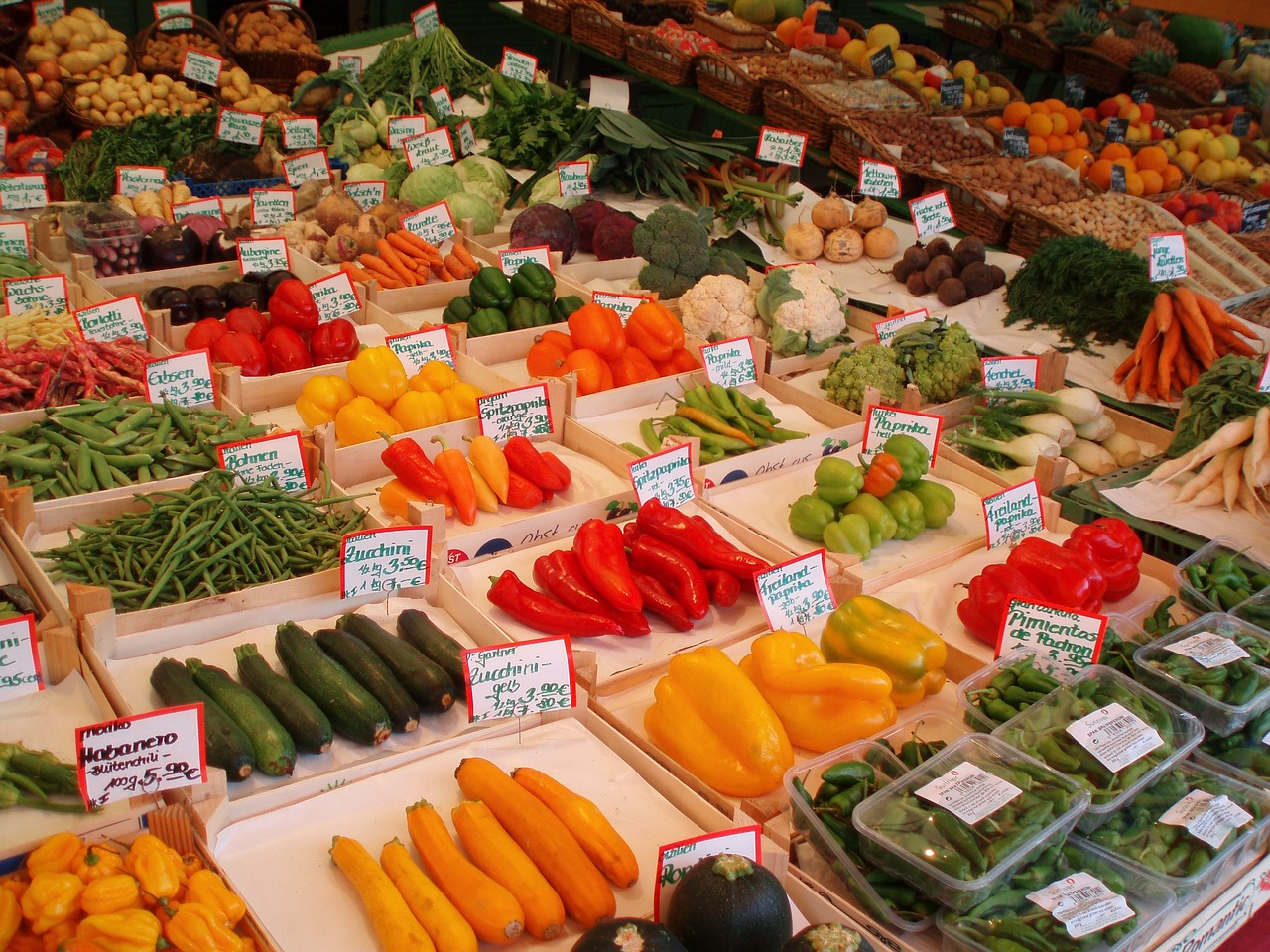
Aztec Marketplaces and Tribute System
The Aztec civilization, known for its advanced economic structures, featured bustling marketplaces that played a crucial role in shaping trade practices within Mesoamerica. These vibrant markets were hubs of exchange where a wide variety of goods, from agricultural products to luxury items, were traded among the Aztec people. The marketplaces not only facilitated commerce but also served as centers of social interaction and cultural exchange, reflecting the rich tapestry of Aztec society.
One distinctive aspect of the Aztec economic system was the tribute system, through which conquered territories would pay tribute to the Aztec Empire in the form of goods, services, or labor. This system not only bolstered the wealth and resources of the empire but also reinforced political control over the conquered regions. The tribute system played a significant role in the economy of the Aztec civilization, influencing trade relationships and power dynamics within the empire.
Moreover, the Aztecs utilized a unique form of currency known as cocoa beans, which held both economic and symbolic value in their society. Cocoa beans were used for various transactions, including trade in the marketplaces and payment of tribute. This commodity-based currency system reflected the agricultural abundance of the Aztec lands and contributed to the flourishing trade practices observed in Aztec marketplaces.
Within the marketplaces, skilled artisans and craftsmen showcased their talents, producing intricate goods such as pottery, textiles, and jewelry that were highly sought after both within the Aztec Empire and beyond. The exchange of these artisanal products not only fueled economic activities but also promoted cultural exchange and artistic innovation among different regions.
The Aztec marketplaces served as vibrant economic centers where goods, ideas, and cultural practices converged, creating a dynamic environment that influenced trade practices and societal development. Through the intricate web of commerce, tribute, and cultural exchange, the Aztec civilization left a lasting legacy on the history of trade and economic systems in the ancient world.

Roman Trade Networks and Currency
Exploring the impact of ancient civilizations on the development of trade practices, showcasing how historical societies shaped the foundations of commerce and exchange that continue to influence modern trade systems.
Examining the barter economy of Mesopotamia and its role in establishing early trade practices, highlighting the significance of goods and services exchange in ancient societies.
Investigating the maritime trade routes established by the Phoenicians and their impact on global commerce, showcasing how ancient seafaring civilizations influenced trade networks.
Exploring the Silk Road as a key trade route connecting East and West, demonstrating how the exchange of goods and ideas along this ancient pathway shaped trade practices.
Analyzing the marketplaces and tribute system of the Aztec civilization, illustrating how economic structures in Mesoamerica influenced trade practices within the region.
Examining the expansive trade networks of the Roman Empire and the introduction of standardized currency, showcasing the influence of Roman economic practices on trade development.
Investigating the Indian Ocean trade routes and the cultural exchange facilitated by maritime commerce, highlighting the interconnectedness of ancient civilizations through trade practices.
Exploring the Chinese silk trade and its role in diplomatic relations, showcasing how the exchange of luxury goods influenced trade practices and international diplomacy.
Analyzing Viking trade routes and exploration activities, showcasing the impact of Norse seafaring on trade practices in medieval Europe and beyond.

Indian Ocean Trade and Cultural Exchange
Exploring the impact of ancient civilizations on the development of trade practices, showcasing how historical societies shaped the foundations of commerce and exchange that continue to influence modern trade systems.
Examining the barter economy of Mesopotamia and its role in establishing early trade practices, highlighting the significance of goods and services exchange in ancient societies.
Investigating the maritime trade routes established by the Phoenicians and their impact on global commerce, showcasing how ancient seafaring civilizations influenced trade networks.
Exploring the Silk Road as a key trade route connecting East and West, demonstrating how the exchange of goods and ideas along this ancient pathway shaped trade practices.
Analyzing the marketplaces and tribute system of the Aztec civilization, illustrating how economic structures in Mesoamerica influenced trade practices within the region.
Examining the expansive trade networks of the Roman Empire and the introduction of standardized currency, showcasing the influence of Roman economic practices on trade development.
The Indian Ocean trade routes were vital in connecting diverse cultures and fostering cultural exchange through maritime commerce. This network of trade routes facilitated the exchange of goods, ideas, and technologies between regions bordering the Indian Ocean. The trade not only involved the exchange of commodities but also led to the blending of different cultural practices, languages, and traditions. The interconnectedness of ancient civilizations through Indian Ocean trade played a significant role in shaping the cultural landscape of the regions involved.
Exploring the Chinese silk trade and its role in diplomatic relations, showcasing how the exchange of luxury goods influenced trade practices and international diplomacy.
Analyzing Viking trade routes and exploration activities, showcasing the impact of Norse seafaring on trade practices in medieval Europe and beyond.
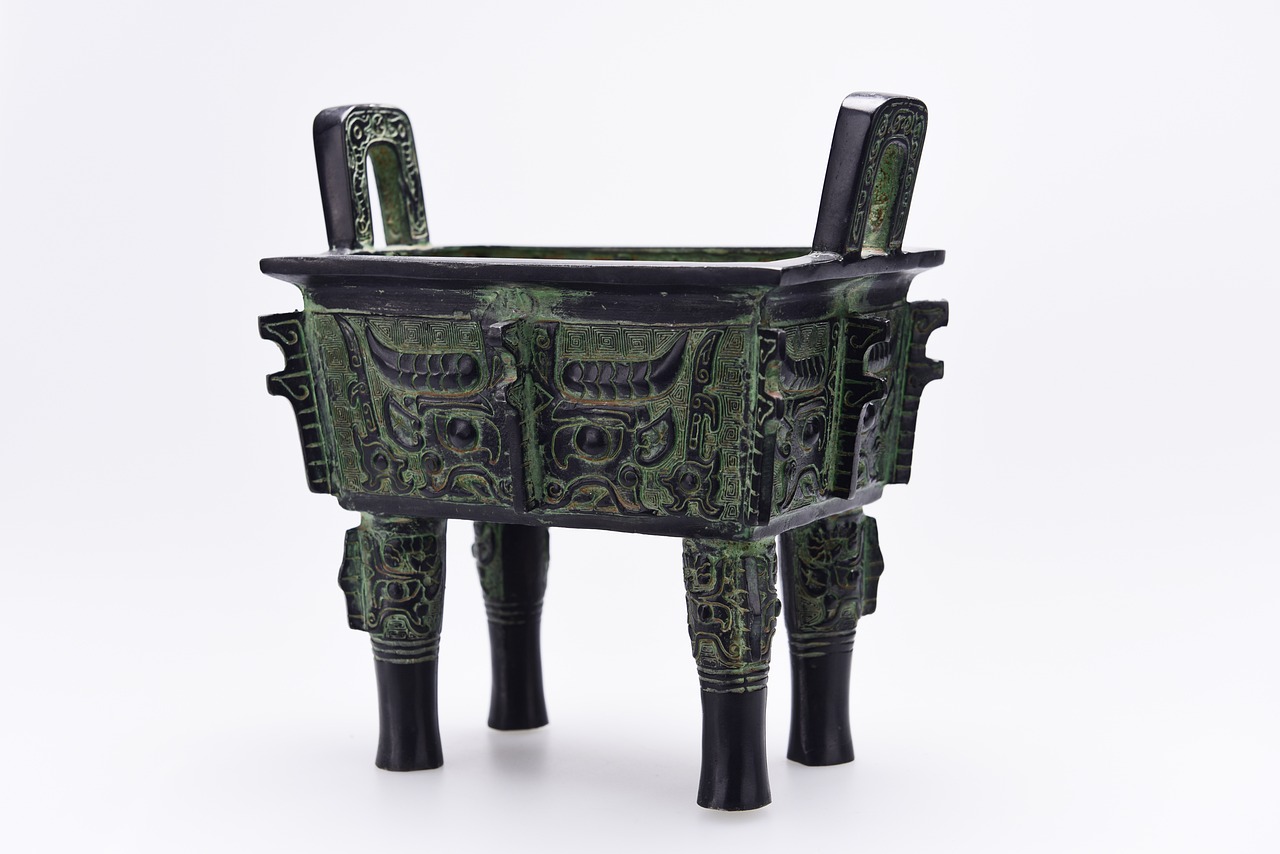
Chinese Silk Trade and Diplomacy
The Chinese silk trade played a pivotal role in shaping diplomatic relations between ancient civilizations. Silk, known as a luxurious and highly sought-after commodity, not only influenced trade practices but also served as a diplomatic tool for fostering international relationships. The intricate process of silk production in China, closely guarded for centuries, added to its allure and value in trade exchanges. As Chinese silk found its way along the ancient trade routes, it not only enriched commercial transactions but also facilitated cultural exchange and diplomatic interactions.
Chinese silk trade routes connected the East to the West, allowing for the exchange of goods, ideas, and technologies between distant lands. The Silk Road, a network of interconnected trade routes, became a conduit for not only silk but also other valuable commodities, sparking a cultural fusion that transcended geographical boundaries. Through the exchange of silk, Chinese dynasties engaged in diplomatic missions with neighboring kingdoms and distant empires, solidifying alliances and promoting peaceful coexistence.
Moreover, the intricate patterns and exquisite quality of Chinese silk fabrics symbolized wealth, power, and prestige, making them highly coveted by foreign rulers and elites. The diplomatic gifting of silk garments and textiles served as a gesture of goodwill and a means of establishing diplomatic ties. Chinese emperors strategically used silk as a diplomatic tool to strengthen political alliances, negotiate treaties, and showcase the sophistication of Chinese craftsmanship to the world.
The Chinese silk trade not only fueled economic prosperity but also fostered cultural understanding and diplomatic relations across diverse civilizations. Through the exchange of silk, ancient China established a legacy of diplomacy that transcended borders and laid the foundation for future diplomatic practices. The silk trade became a symbol of unity and cooperation, bridging gaps between nations and fostering mutual respect and collaboration in the ancient world.

Viking Trade and Exploration
Viking trade and exploration played a crucial role in shaping medieval Europe's economic landscape and influencing trade practices across regions. The fearless Norse seafarers, known for their iconic longships, ventured far and wide, establishing trade routes that connected distant lands and cultures. These bold explorers navigated treacherous waters, braved unknown territories, and engaged in commerce with various societies, contributing to the exchange of goods, ideas, and technologies.
One of the key aspects of Viking trade was the establishment of trading posts and settlements in strategic locations along their maritime routes. These outposts served as hubs for conducting business, exchanging commodities such as furs, timber, amber, and weapons with other civilizations. The Vikings' extensive network of trade routes extended from Scandinavia to the Mediterranean, the British Isles, and even as far as the Middle East, showcasing their prowess as skilled traders and navigators.
Moreover, Viking exploration not only fueled trade but also facilitated cultural exchange and the spread of knowledge between different regions. Through their expeditions, the Norsemen interacted with diverse peoples, learning about new customs, languages, and technologies. This cultural interchange not only enriched their own society but also influenced the development of trade practices by introducing novel goods and trading methods.
Additionally, the Vikings' reputation as fierce warriors and seafarers granted them a unique position in the medieval trade landscape. Their military prowess ensured the safety of their trade routes, allowing for the secure transport of valuable goods across vast distances. This sense of security and reliability in Viking trade operations contributed to the growth of commerce and the establishment of long-lasting trade partnerships with distant civilizations.
In conclusion, Viking trade and exploration were instrumental in shaping the economic dynamics of medieval Europe and beyond. The legacy of the Norse traders and explorers continues to resonate in modern trade practices, emphasizing the significance of cross-cultural interactions, maritime commerce, and the spirit of adventure in fostering global trade relations.
Frequently Asked Questions
- What is the significance of barter systems in ancient civilizations?
Barter systems in ancient civilizations played a crucial role in facilitating trade and exchange of goods and services before the advent of standardized currency. These systems allowed individuals to acquire essential items by exchanging surplus goods, fostering economic relationships and promoting commerce within communities.
- How did maritime trade routes impact global commerce in ancient times?
Maritime trade routes established by civilizations like the Phoenicians enabled the transportation of goods across vast distances, connecting regions and cultures through trade networks. These routes facilitated the exchange of valuable commodities, cultural influences, and technological advancements, contributing to the growth of global commerce and the spread of ideas.
- What role did the Silk Road play in shaping trade practices between East and West?
The Silk Road served as a vital trade route linking Asia and Europe, facilitating the exchange of silk, spices, and other goods between different civilizations. This ancient pathway not only promoted economic activities but also fostered cultural interactions, technological diffusion, and diplomatic relations, shaping trade practices and international connections.
- How did the tribute system of the Aztec civilization influence trade within Mesoamerica?
The tribute system of the Aztecs involved the collection of goods and resources from conquered territories, which were then redistributed within the empire. This economic structure not only supported the Aztec economy but also influenced trade practices by regulating the flow of commodities and fostering trade relationships between different regions.
- What impact did the Roman trade networks have on the development of commerce?
The expansive trade networks of the Roman Empire facilitated the exchange of goods, services, and cultural influences across vast territories, contributing to the growth of commerce and economic prosperity. The introduction of standardized currency by the Romans also streamlined trade transactions and promoted market integration, influencing trade practices in the ancient world.
- How did the Indian Ocean trade routes promote cultural exchange among ancient civilizations?
The Indian Ocean trade routes served as a hub for maritime commerce, connecting diverse societies and facilitating the exchange of goods, ideas, and cultural practices. This network of trade routes promoted cultural interactions, technological diffusion, and the spread of knowledge, shaping the development of trade practices and fostering interconnectedness among ancient civilizations.
- What was the significance of the Chinese silk trade in international diplomacy?
The Chinese silk trade played a pivotal role in diplomatic relations between China and other nations, as silk was a highly sought-after luxury commodity with symbolic value. Through the exchange of silk and other goods, diplomatic ties were strengthened, alliances were formed, and trade practices were influenced, showcasing the interconnected nature of economic and diplomatic interactions in ancient times.
- How did Viking trade routes contribute to the development of trade practices in medieval Europe?
Viking trade routes and exploration activities expanded trade networks in medieval Europe, connecting Scandinavian regions with other parts of the continent. The Viking seafaring culture promoted trade, cultural exchange, and the transfer of goods and ideas, influencing the development of trade practices and contributing to the economic growth of medieval Europe.

